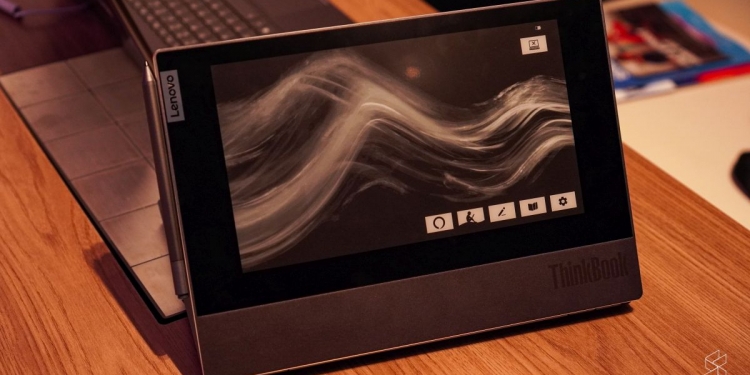This, was not a laptop I was expecting. Or rather, this was not a laptop that I was expecting to like as much as I ended up liking it after my brief hands on. The ThinkBook Plus seemed at first like like Lenovo just slapped on an e-Ink display just so they could say they had an all new product. And, I mean, I can’t really say it isn’t, because I only got to spend a short amount of time with it.
But, I also can’t say that it is because some of the ideas and potential applications they’ve shared seemed like reasonable scenarios I’d find myself in. So, for now, I’m giving this a conditional thumbs up because I’m a sucker for companies who try to push the needle forward–whether it ends up being a good idea or not.
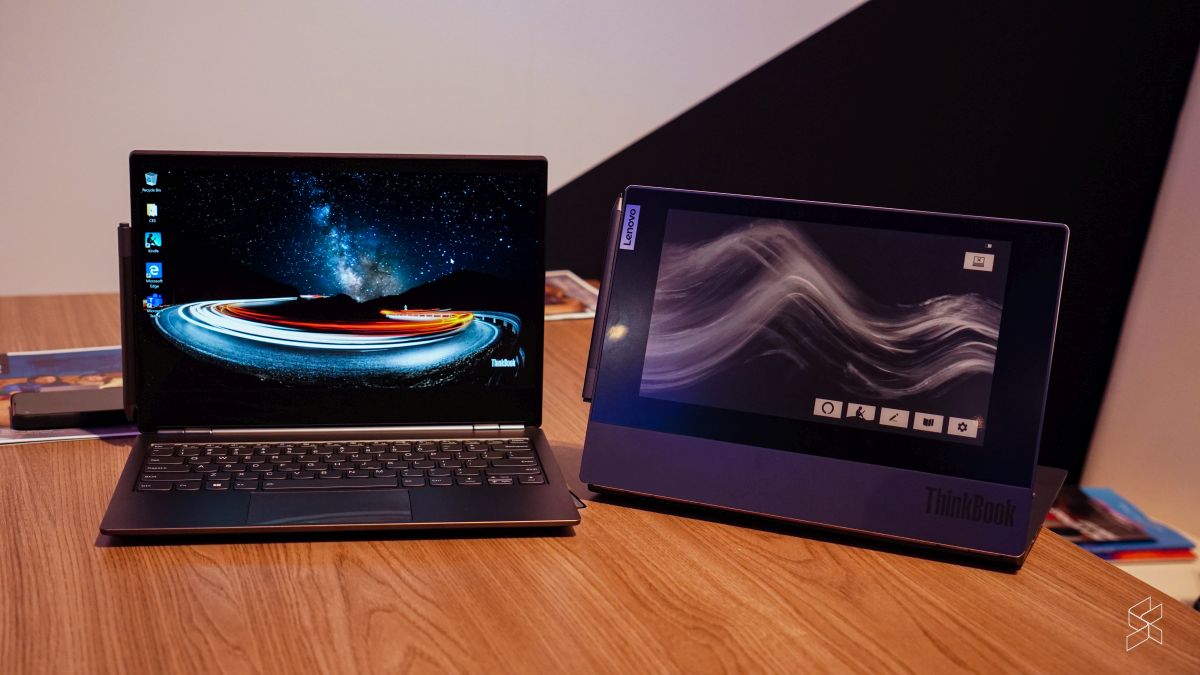
OK, if you’re not familiar with what the ThinkBook Plus is, it’s basically Lenovo’s fresh take on the multi-screened laptop. Y’know, kind of like the ZenBook Pro Duo, but instead of going for a proper screen, Lenovo opts for a 10.8″ e-Ink display instead. And that’s where I’ll start my impressions.
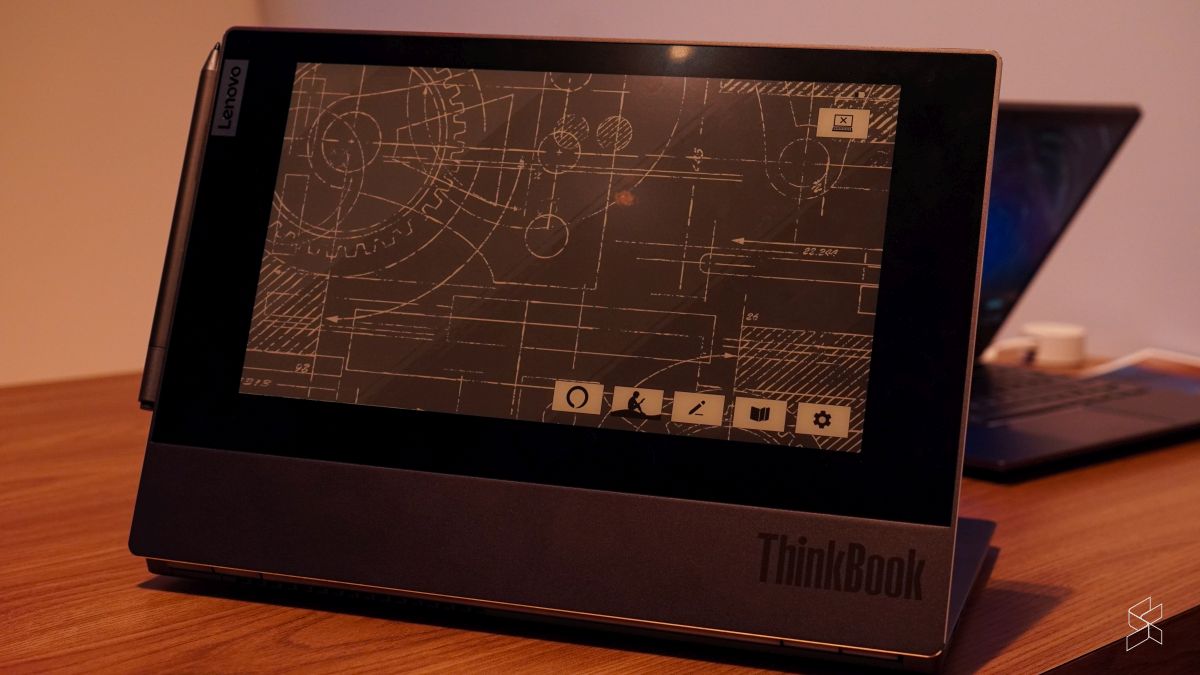
Being an e-Ink display, there are a bunch of inherent benefits. First off, power consumption will definitely be down compared to having two actual displays on a laptop. Lenovo tells me that it draws “minimal power”, but they don’t have official numbers yet.
That being said, Lenovo believes that with this screen, ThinkBook Plus users will actually end up saving battery instead of drawing more power. Why? Well, because the idea is that you can actually use the e-Ink display for a lot of the day-to-day tasks you’d otherwise have to fire up the laptop’s actual display to do.
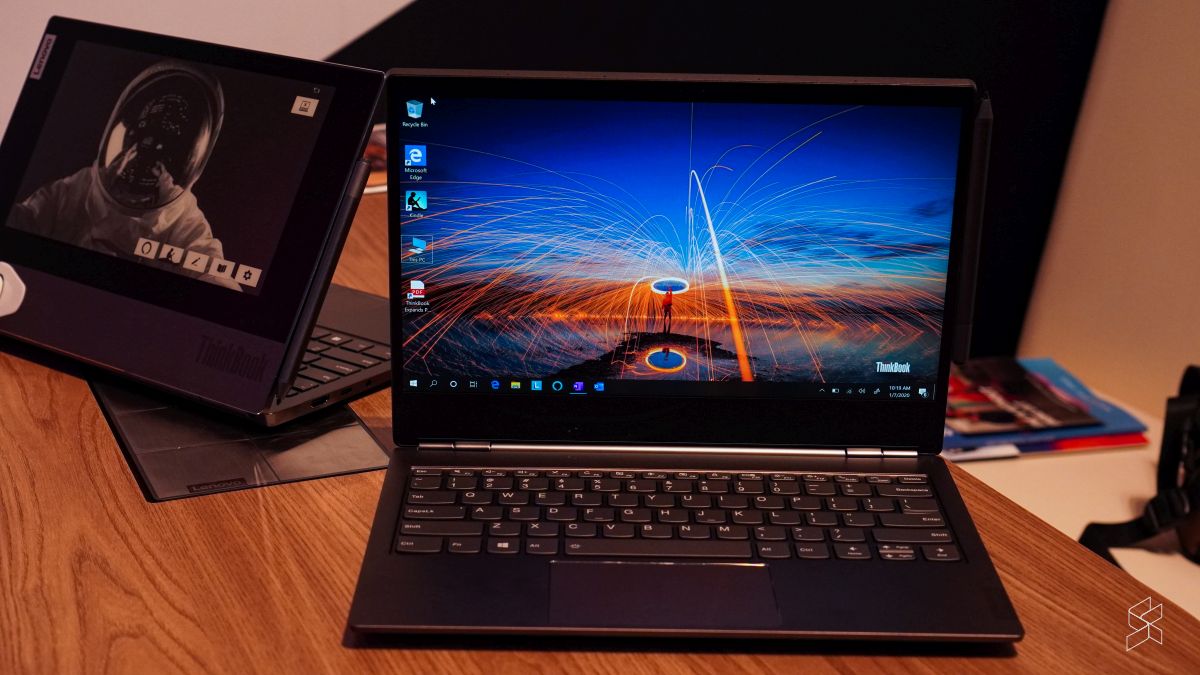
With this touch-sensitive e-Ink panel, you’re getting what Lenovo says is “pretty much a Full HD screen if you look at it”, and I can vouch for that. The e-Ink display doesn’t run on its own separate software, but instead it pulls several functions from the Windows 10 OS that the ThinkBook Plus already comes with.
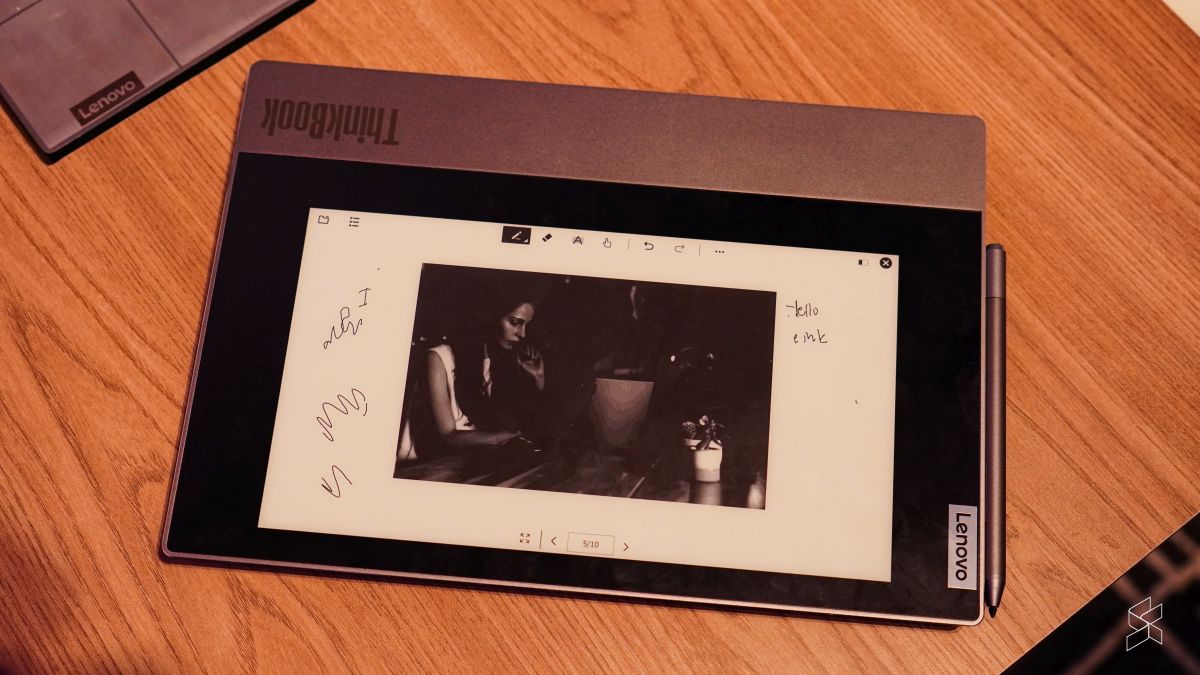
What I was rather impressed with was the number of tasks you can use this panel for. For starters, you can use it to check your calendar, notifications, battery, email, date/time and the weather. But, it’s also a full function Kindle e-Reader so you don’t need to get a separate device if you want to read e-Books on that platform. On top of that, it’s built for Amazon Alexa so you can get it to do a bunch of things with voice commands without needing to pop the lid of your laptop.
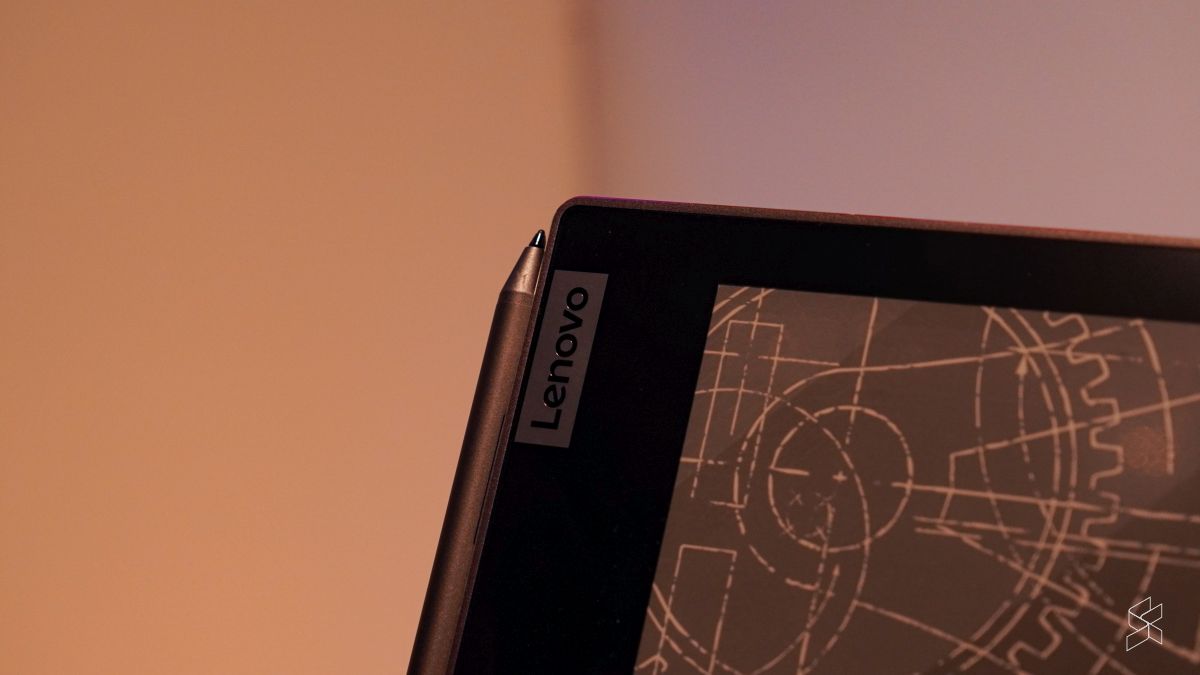
Besides that, the e-Ink panel also supports stylus input with the included Precision Pen, and Lenovo says this panel is also a full function digitiser. While being able to write and take notes is pretty handy, what’s perhaps even more handy is the fact that you can use this screen to edit your PDF documents too. You can make notes and write in different colours too. It won’t show on the e-Ink panel because it’s a monochrome screen, but when you open your PDF document with the normal screen the colours will all be there.
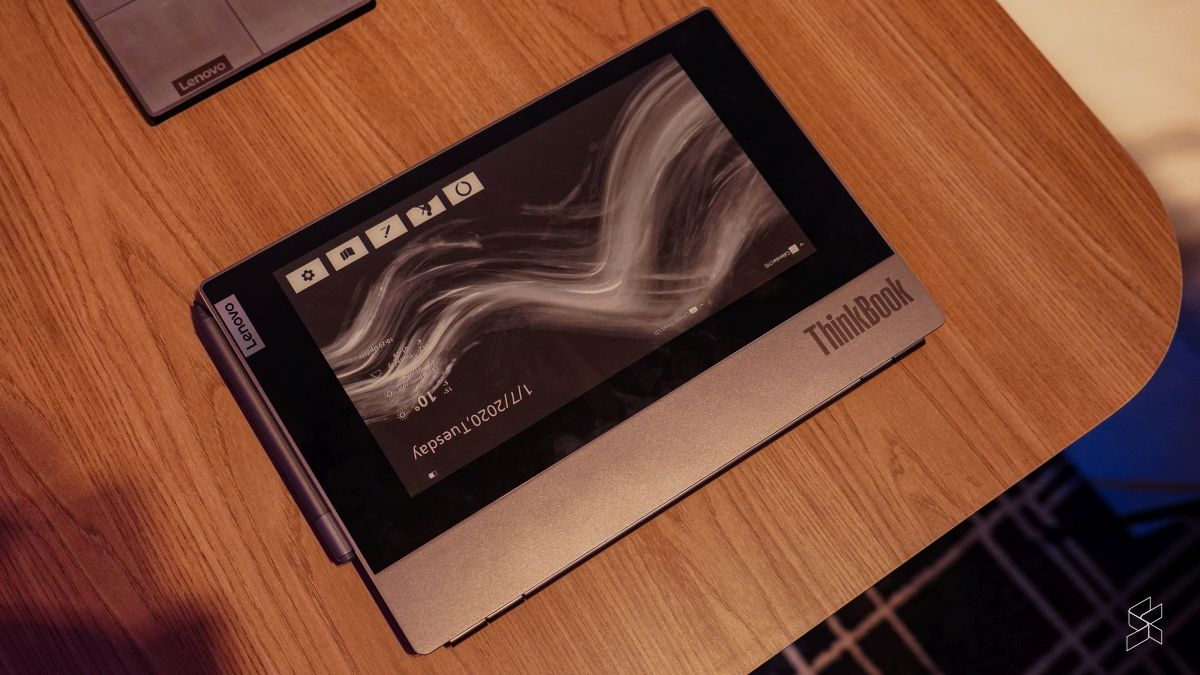
Lenovo’s also thought about protecting this e-Ink display both physically and from prying eyes. The panel itself is protected by a layer of Corning’s Gorilla Glass (the same kind of glass you’d find on your smartphones) while the contents of the screen won’t be shown unless you unlock your laptop with your fingerprint.
That being said, while having an e-Ink display has its benefits, it also comes with its own set of drawbacks. Performance, for example, is nowhere near as smooth as an actual screen. Touch responses are much slower, scrolling isn’t smooth, and the overall refresh rate of the screen is just a little slow. But, if you’ve had experience with e-Ink panels, you’d probably already know that.
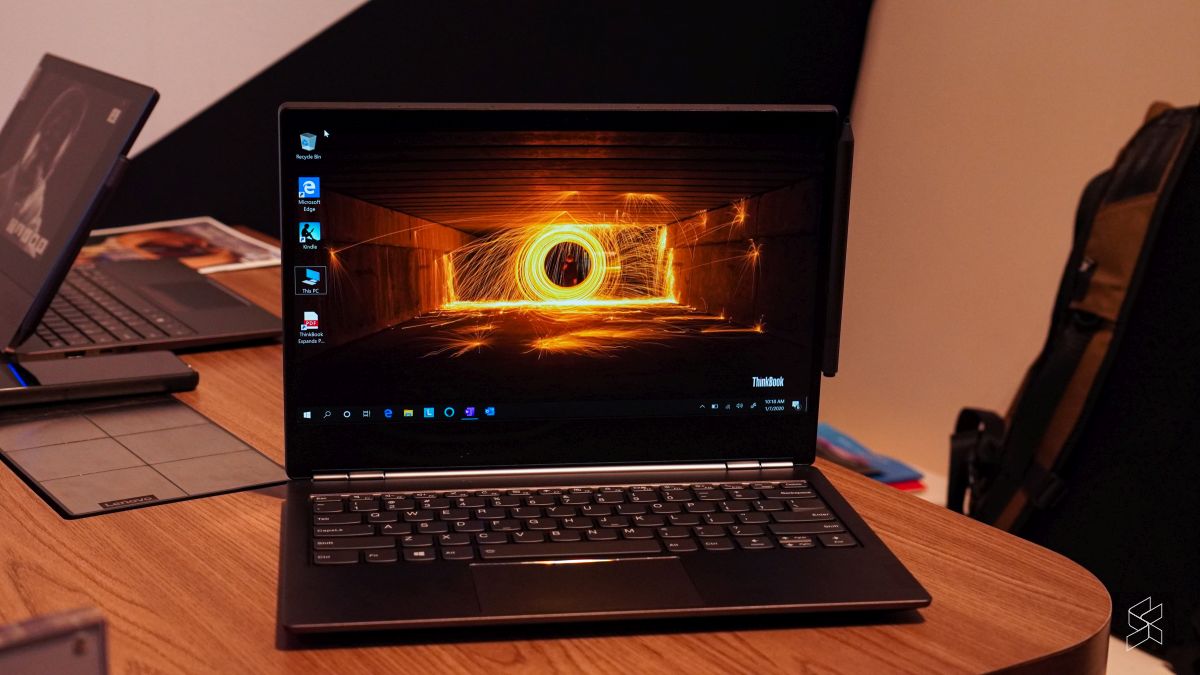
Ultimately though, the question is: will this be useful in practical day-to-day situations? I…honestly don’t know yet. The idea here, seems very reasonable to me. I’d love not having to open my laptop to check my emails and take notes. Just being able to whip out my pen (which magnetically attaches to the lid of the laptop by the way) and start scribbling seems really useful to me, especially when I don’t want to carry the extra weight of my iPad alongside my laptop.
What’s more, the potential of e-Ink displays are almost limitless, as we’ve seen with Lenovo’s own Yoga Book C930 being able to display full browser windows and photos. So who’s to say Lenovo can’t also enable this on the ThinkBook Plus down the road?
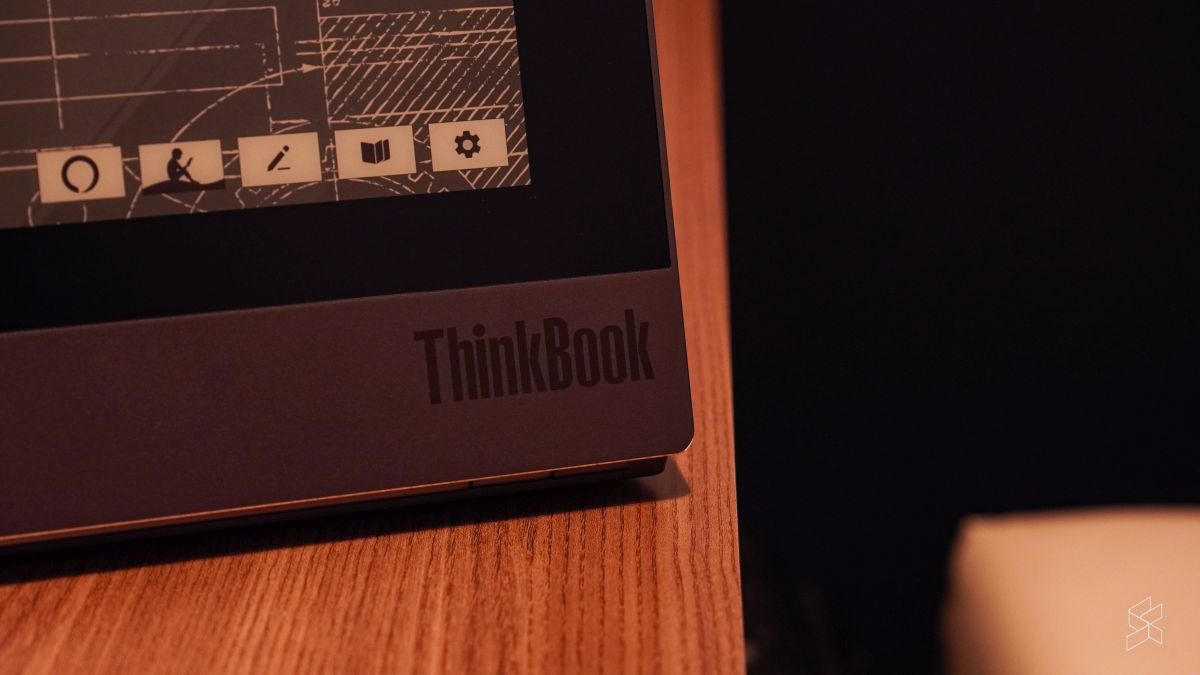
But, the thing with these kinds of technology is, it’s hard to really determine if it’s something I’d use daily once the novelty has worn off. And it’s not something I’m able to identify with just a hands-on session. I’ll need to actually use it for extended periods before I can give you an answer.\
Still, I will say that the rest of the laptop seems fairly capable. You’ve got a 13.3″ Full HD IPS display inside, 10th Gen Intel Core processors inside (up to an i7), up to 16GB of RAM and 512GB of internal storage. Plus, it’s all wrapped up in a fairly well-built chassis.
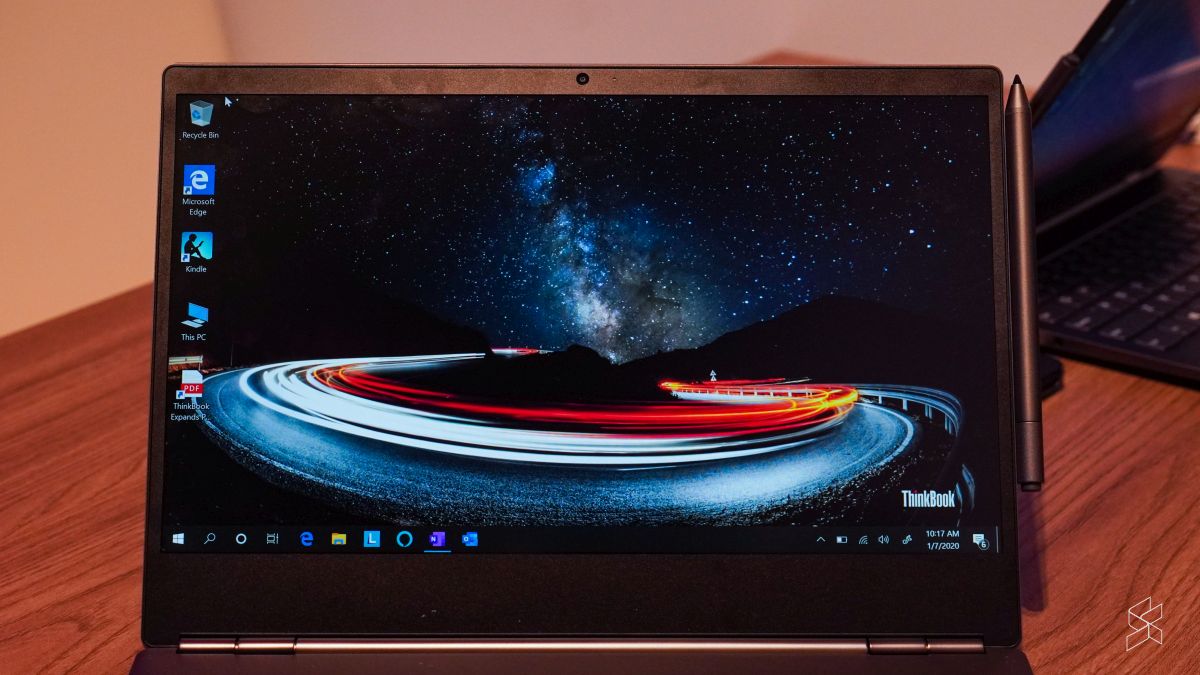
I would have liked to see a discrete GPU option and a touchscreen for the main display, but beyond that the rest feels pretty bog-standard for a laptop in this category. For now, I don’t know if or when this laptop will make it into the Malaysian market, but it has prices starting from USD1,199 (~RM4,887) and is expected to be available in the US from March 2020.
Photography by Rory Lee on the Sony A6600.

